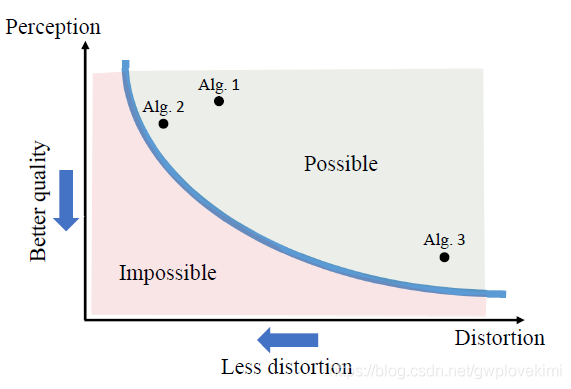本博文为本人阅读论文《The Perception-Distortion Tradeoff》的学习笔记。这篇论文主要是对超分问题中,感知和失真两个评价标准进行分析的。
Image restoration algorithms are typically evaluated by some distortion measure (e.g. PSNR, SSIM, IFC, VIF) or by human opinion scores that quantify perceived perceptual quality.(SR问题,对于算法的评估主要是分为两类,一类是是像素维度上的,对于MSE的优化,但这会导致过平滑、模糊等效应。而另外一类,就是基于人眼的直观感受,比如MOS tset、NIQE,图片更加的sharp,更加符合人眼的直观感受,更加的自然,但是会存在的问题,比如原来是直的线,会变成倾斜等~详细可以参考之前的博客哈~)而这篇论文就是为了证明mathematically that distortion and perceptual quality are at odds with each other(就是MSE loss和感知损失是对立的)

The goal in image restoration is to estimate an image from its degraded version。Distortion refers to the dissimilarity between the reconstructed image and the original image。Perceptual quality, on the other hand, refers only to the visual quality of reconstructed image, regardless of its similarity to original image.
超分问题中的loss分为以下几种:
- Distortion (fullreference) measures——指重建图像与原始图像之间的,重建图像的整体与参考图像越像,评价指标越高。以MSE为代表
- Perceptual quality(感知评判因子)——is the degree to which it looks like a natural image, and has nothing to do with its similarity to any reference image.
- Human opinion based quality assessment
- No-reference quality measures——No-reference quality measures are commonly based on estimating deviations from natural image statistics.,such as NIQE
- GAN-based image restoration——an adversarial loss,which minimizes some distance between the distribution of images produced by the generator and the distribution of images in the training dataset.(最小化了由生成器生成的图像的分布与训练数据集中的图像分布之间的一些距离。)